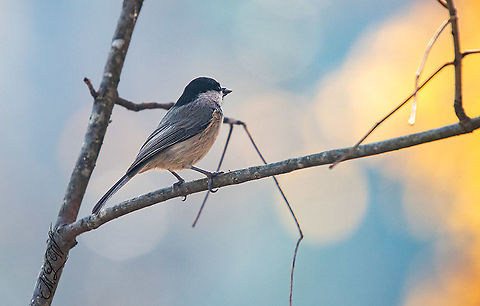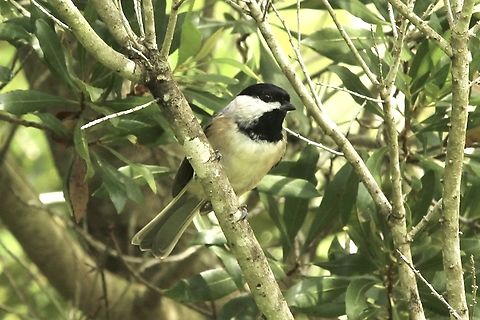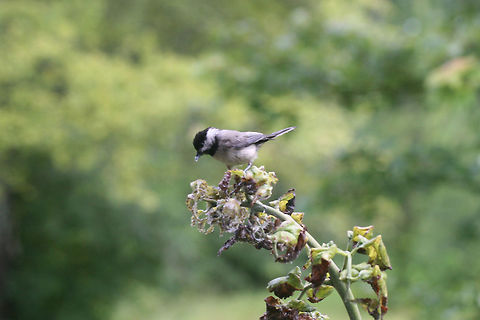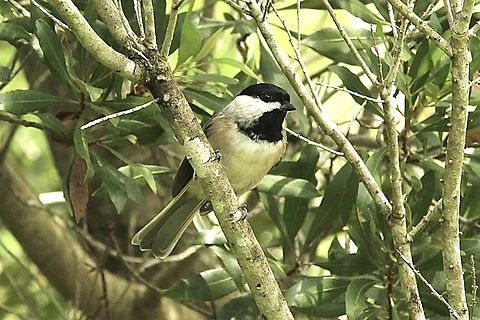
Appearance
Adults are 11.5–13 cm long with a weight of 9–12 g , and have a black cap and bib with white sides to the face. Their underparts are white with rusty brown on the flanks; their back is grey. They have a short dark bill, short wings and a moderately long tail. Very similar to the Black-capped Chickadee, the Carolina Chickadee is distinguished by the slightly browner wing with the greater coverts brown and the white fringing on the secondary feathers slightly less conspicuous; the tail is also slightly shorter and more square-ended.
Distribution
Their breeding habitat is mixed or deciduous woods in the United States from New Jersey west to southern Kansas and south to Florida and Texas; there is a gap in the range at high altitudes in the Appalachian Mountains where they are replaced by their otherwise more northern relative, the Black-capped Chickadee. They nest in a hole in a tree; the pair excavates the nest, using a natural cavity or sometimes an old woodpecker nest. They may interbreed with Black-capped Chickadees where the ranges overlap, which can make identification difficult.They are permanent residents, not usually moving south even in severe winter weather.

Habitat
Their breeding habitat is mixed or deciduous woods in the United States from New Jersey west to southern Kansas and south to Florida and Texas; there is a gap in the range at high altitudes in the Appalachian Mountains where they are replaced by their otherwise more northern relative, the Black-capped Chickadee. They nest in a hole in a tree; the pair excavates the nest, using a natural cavity or sometimes an old woodpecker nest. They may interbreed with Black-capped Chickadees where the ranges overlap, which can make identification difficult.They are permanent residents, not usually moving south even in severe winter weather.

Food
These birds hop along tree branches searching for food, sometimes hanging upside down or hovering; they may make short flights to catch insects in the air. Insects form a large part of their diet, especially in summer; seeds and berries become important in winter. They sometimes hammer seeds on a tree or shrub to open them; they also will store seeds for later use.During the fall migration and winter, chickadees often flock together. Many other species of birds, including titmice, nuthatches, and warblers can often be found foraging in these flocks. Mixed flocks stay together because the chickadees call out whenever they find a good source of food. This calling out forms cohesion for the group, allowing the other birds to find food more efficiently.
References:
Some text fragments are auto parsed from Wikipedia.